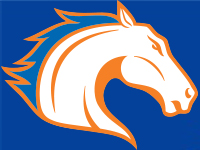CENTRAL AMERICA (9/30/15)
- J Curve, Theory of Revolution, James Davies, 1962
- Ortega for President: The Religious Rebirth of Sandinismo in Nicaragua, Henri Gooren, European Review of Latin American and Caribbean Studies, 89, October 2010, pp. 47-63.
- El Salvador: Contradictions of Neoliberalism and Building Sustainable Peace. Wade. International Journal of Peace Studies. 2008.
- NICARAGUA
- 1856—William Walker--the movie
- 1930-34—U.S. “penetration”
- 1934-1979 (roughly)—Anastasio Somoza Garcia (father), Luis Somoza Debayle (son), and Anastasio Somoza Debayle (son)
- Carter Confronts Somoza--"Legacy of U.S. involvement"
- July, 1979—Somoza overthrown by FSLN-led Revolution
- 1979-85—FSLN-led junta
- 1985-90—Daniel Ortega (FSLN)
- 1990-97—Violeta Barrios de Chamorro—1st female head of government in Latin America—ousts FSLN as leader of United Nicaraguan Opposition (UNO)
- 1997-2002—Enrique Aleman—elected under anti-Sandinista banner—but developed strategic alliance with Ortega & FSLN—in 2002 sentenced to 20-yr. prison term for corruption
- 2002-06—Enrique Bolanos—former businessman and key opponent of FSLN after the Revolution
- 2006—Daniel Ortega elected for his second term on Nov. 5, 2006 with plurality of 38%-had run unsuccessfully in 1996 and 2001. Re-elected 2011.
- Elements of a successful revolution, as applied to the Nicaraguan Revolution
- Cause (Somozas and U.S. penetration)
- Leadership (Sandino and FSLN)
- Organization and Mass Participation—the “people of Nicaragua” did not rise up—but it was a broad-based coalition
- External Support
- Catalysts
- U.S. aid to the contras—mining of harbor—reasons for:
- FSLN economic policy
- FSLN “regime type”
- National security threat
- EL SALVADOR
- The Salvadoran political system has been marked by more than 50 years of military rule in association with large landowners who dominated the economy.
- Six repetitions of the same cycle: consolidation of power by conservatives, growing dissent and repression, coup by progressive military, re-emergence of conservatives, conservatives resumption of power.
- Political Spectrum—FMLN PSD “center” PDC ARENA
- “Civil War”—1980-92
- Archbishop Romero killed, March 1980
- Four U.S. nuns killed, Dec., 1980
- Revolutionary Junta (led by Jose Napoleon Duarte-PDC)—1979-82
- Duarte (PDC)—1984-89—defeats Roberto D’Aubisson (ARENA & death squads)
- Alfredo Cristiani (ARENA—more moderate)—1989-94
- Peace Accords, 1992—FMLN becomes political party
- Armando Calderon Sol, 1994-99 (ARENA)
- Francisco Flores, 1999-2004 (ARENA)
- Antonio Saca, 2004-present (ARENA)—defeats FMLN candidate (Handal) by 58%-36% margin.
- Carlos Mauricio Funes Cartagena elected President in 2009 presidential election as the candidate of the left-wing Farabundo Martí National Liberation Front political party.
- Differences with Nicaragua in terms of factors for a successful revolution
- Cause (no similarities to Somozas or U.S. penetration)
- Leadership (FMLN)
- Organization and Mass Participation—FMLN more polarized
- External Support (little)
- Catalysts (none?)
- Murder of Archbishop Romero, March 24, 1980
- Murders of four U.S. Nuns, December, 2, 1980
- Salvador, the movie
|



